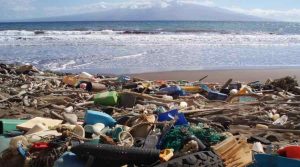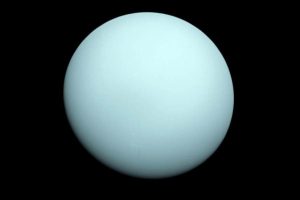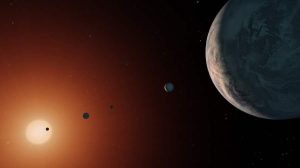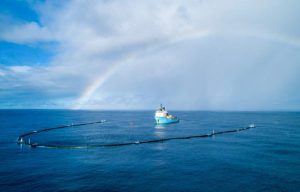Project to clean the oceans of plastic trash aborted. The structure broke into two parts

Project to clean the oceans of plastic trash aborted. The structure broke into two parts
The project to clean the oceans of plastic trash initiated by the Ocean Cleanup organization has been temporarily halted. The arm that was supposed to help deal with garbage drifting in the oceans broke into two parts. The device is now sailing to a port where it will undergo repairs and more tests, before returning to the ocean again.
The project of the Ocean Cleanup organization, founded in 2013 by Boyan Slate, is an endeavor thatorego goal is to clean up the oceanow of the floating debris in the. Engineers worked for five years to design a cleaning arm. They finally got it right last year, and in September the device, dubbed System 001, set off from the San Francisco harbor.
The cleaning arm is 610 meters longoIt was decided that the device will be used to clean the oceans and cost nearly 6 millionoin euros. Initially, testing was going smoothly, but 116 days after setting sail, coordinators on site noticed that an 18-meter section had detached from the structure. Those involved in the project even gave it a name: Wilson.
It was decided that the device wroci to a port in Hawaii, where it will undergo repairs and additional tests. However, those responsible for the project assure us that this is not the end of it. The originator and head of the project Boyan Slat assures that once the necessary repairs are made, the arm wrothose on the ocean.
– The project did not end in disaster. We were already planning to returnot the device to port – Slat wrote on Twitter. The glitch only accelerated the powrot. The device is intended to float on the water, with an impermeable material to collect plastic trash from its surface. The likely cause of the failure was that the forces acting on the structure were too high or the material from which it was made was too weak.
Those working on the project assure that when they return to port they will carefully examine the damaged parts and draw appropriate conclusions. After repairs will set off towards the Great Pacific Garbage Patch.
The seas and oceans contain huge amounts of wasteoin plastics. The Great Pacific Garbage Patch is the largest of the islands of plastic wasteow, whichore formed in the oceans. It consists of about 1.8 trillion pieces ofoin plastic and weighing about 80,000 tons. Its surface area is 1.6 million kilometersoin square – is an area almost five times larger than Poland.
This offshore dump consists of a majorownie of particles measuring less than 0.5 millimeters, although much larger waste is found there – Fishing nets, plastic crates or plastic bottles. Amongrod wasteow has even spotted sediment. This garbage comes not only from ships passing through the Pacific Oceanow. First of all, they flow into the ocean carried along with rivers, and ocean currents clump them into large islands.
The Great Pacific Garbage Patch is not the only. Similar clusters of plastic wasteow have formed throughout the oceans. The larger ones are five, the smaller ones no one counts. Despite the declarations of virtually all governmentoin coastal states about reducing the amount dumped into rivers and then into the oceanoIn plastics, the situation is getting worse and worse. If nothing changes, the amount of plastic in the oceans will triple in 10 years, and by 2050 plastic waste willoin the planet‘s waters will outnumber the fish swimming in them.
System 001 is a structure measuring more than 600 metersoin length, whichora makes use of the floating patternsoin to float into areas with high concentrations of plastic, creating a horseshoe-shaped barrier to contain the waste, whichore pocan later be collected and recycled.
The thick-walled tube provides a floating element for the structure. The system is equipped with beacons, radar reflectors, beacons, GPS and collision avoidance signals. Solar panels provide power.
A 3-meter-long mesh was mounted below the floating structureow, ktora is to help keep the garbage collected. If the pilot design passes the test, a whole fleet of similar devices will be created. Tworicians of System 001 claim that it does not threaten any marine life, ktore will be able to slide between the plastic waste.




